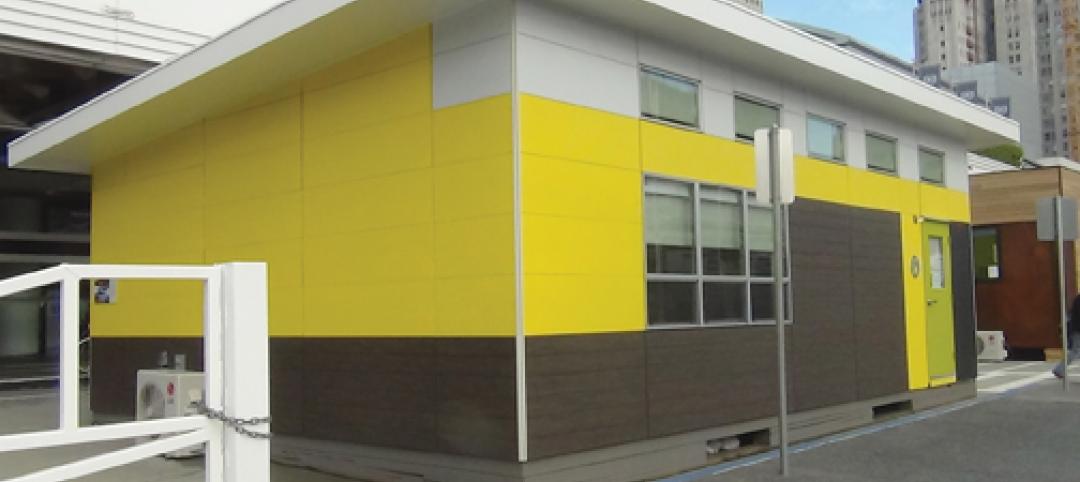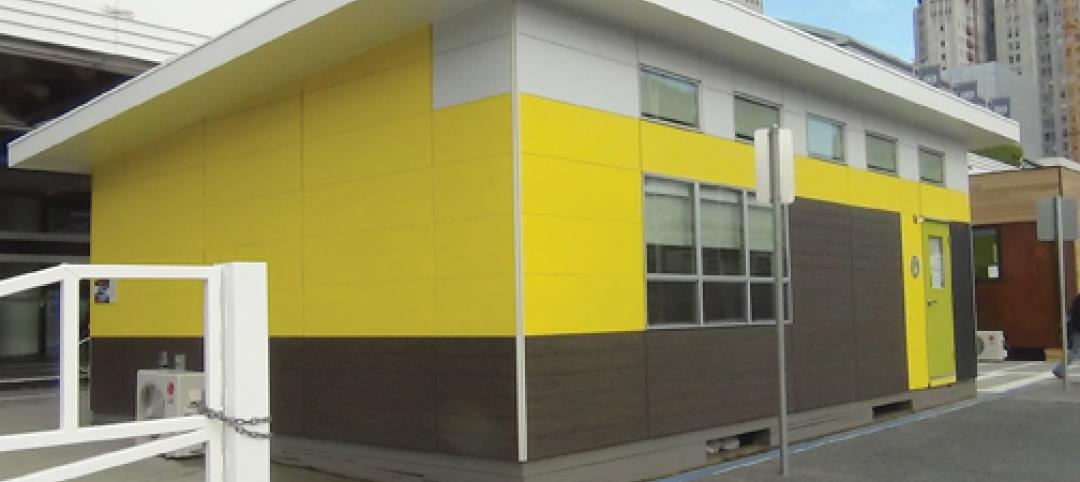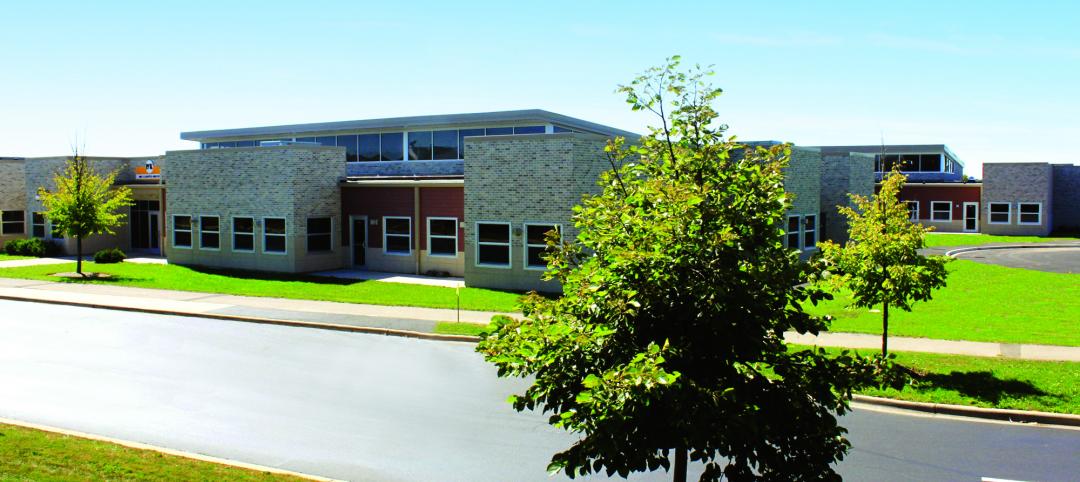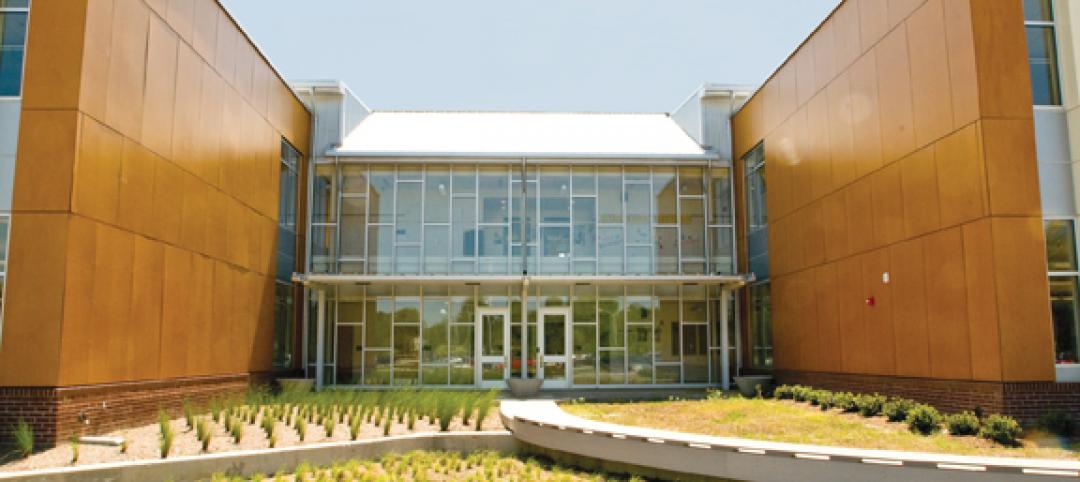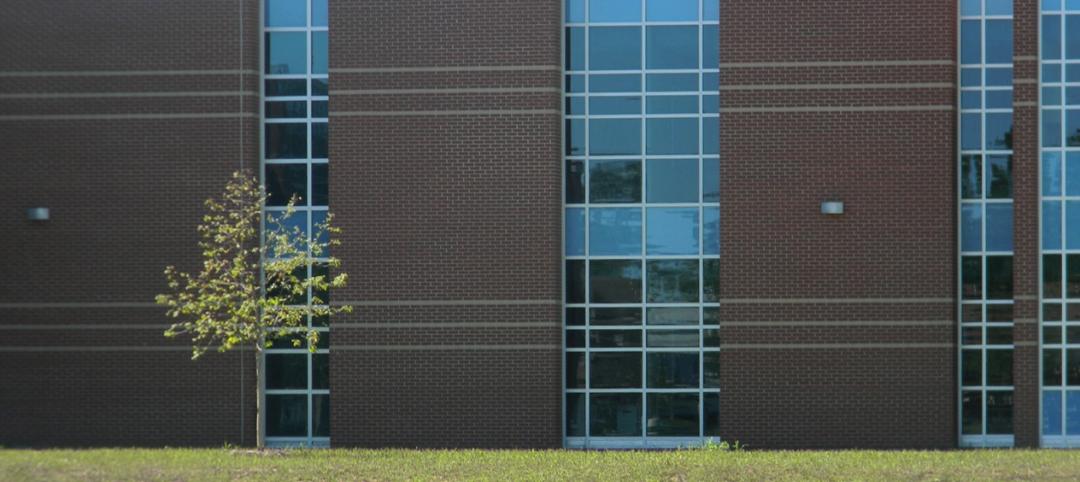 |
| The Haverford School campus was active during construction, so the soccer team had to practice within 10 feet of where the Upper School’s site fencing had been erected. |
Imagine this scenario: You're planning a $32.9 million project involving 112,000 sf of new construction and renovation work, and your job site is an active 32-acre junior-K-to-12 school campus bordered by well-heeled neighbors who are extremely concerned about construction noise and traffic.
Add to that the fact that within 30 days of groundbreaking, the general contractor gets canned. And one more thing: you have 15 months until the school bell rings.
This nightmare situation is exactly what Mike Rufo faced as construction manager for The Haverford School, a private school for 981 boys, on Philadelphia's Main Line. Rufo, owner of Rufo Contracting Inc. of Conshohocken, Pa., had worked with the school since 1992, when the institution launched a 15-year program to upgrade its campus. The project in question—construction of a new Upper School building and a new library totaling 87,000 sf and the renovation of Wilson Hall, the school's original 25,000-sf, 1903 classroom building—would be his last for the client, and one he would not forget.
 |
| The brick and glass Upper School (above) angles around to create a nook for the amphitheater. The 87,000 sf of new construction connects to the renovated Wilson Hall (below) to create the school’s new face. |
 |
In July 2007, with the original GC out, Rufo's most pressing concern was finding a qualified replacement—fast! Three firms looked at the project schedule and turned him down flat. With less than 400 days before the opening day, Rufo contracted with INTECH Construction of Philadelphia. The new GC took over a job site where demolition had started, the first foundations had been poured, the installation of sheeting, shoring, and soil nailing had begun, and steel was on order.
INTECH also inherited a project located in a residential neighborhood where on-site work was limited to the hours from 8 am to 6 pm, and never on Sunday. Deliveries could not be made using residential streets. Well-connected neighbors made sure these rules were enforced.
INTECH's first task was reassuring the remaining Building Team members—including a number of worried subcontractors and the equally nervous designer—that the project schedule could be met. Philadelphia-based MGA Partners Architects had worked with INTECH before, but they were concerned that the grueling timeline would force INTECH to value engineer the project and make compromising design modifications.
 |
| Numerous gathering and work spaces scattered throughout the project, including a columned seating area (top) and glass meeting pods (below), are designed to foster collaborative learning and social interaction. |
 |
MGA's design called for the combined Upper School building and Wilson Hall to become the new face of the campus. The new brick, glass, and steel facility would be connected to the renovated fieldstone and wood-framed Wilson Hall via a glass and limestone entrance pavilion. The sleek new Severinghaus Library would be tucked behind the 105-year-old Wilson Hall. Extensive glazing and curtain wall construction would open up the buildings to the outside, flooding the well-equipped and highly detailed classrooms, science labs, art studios, study nooks, and gathering spaces with daylight. The architects designed the project to achieve LEED Gold certification (still pending).
Rather than compromise the building's design integrity or sustainability efforts, INTECH instead reworked the schedule to break things down into more manageable chunks, called fragnets—for “fragmented networks of sub-projects”—to sequence the work more effectively. INTECH also asked MGA to provide an on-site architect so that decisions about any absolutely necessary modifications could be made quickly and in keeping with the original design intent. The cost of an on-site architect was not in the school's original budget, but the headmaster, Dr. Joseph Cox, realizing the value of having an MGA architect on site, pushed through approval of the additional expense.
The new sequencing scheme made all the difference. For example, the Building Team reworked the schedule so that interior work on the Upper School building could begin early. Fabrication of the project's cast stone detailing was more closely coordinated with the installation of the brick walls. The millwork and casework packages were reworked to comply with the integrity of the design but at a lower cost. Architectural metals and ornamental stairs were modified so that they could be installed faster, with no negative impact on the design intent.
Last-minute on-site changes like these can kill a project schedule, but the opposite was true at The Haverford School. The entire project was completed in August 2008—just in time for the start of the academic year.
“They did a great job on schedule,” said Building Team Awards judge Tracy Nicholas, VP, Alter Construction Management of Skokie, Ill. “There was great collaboration. Logistically, this was a difficult job with multiple departments, and they still did it all in 15 months.”
Related Stories
| Feb 6, 2013
Arcadia (Calif.) High School opens $20 million performing arts center
A 60-year old wish for the community of Arcadia has finally come true with the opening of Arcadia Unified School District’s new $20 million Performing Arts Center.
| Feb 5, 2013
8 eye-popping wood building projects
From 100-foot roof spans to novel reclaimed wood installations, the winners of the 2013 National Wood Design Awards push the envelope in wood design.
| Dec 9, 2012
Greenzone pop quiz
Greenbuild attendees share their thoughts with BD+C on the SAGE modular classroom.
| Dec 9, 2012
Modular classroom building makes the grade
SAGE modular classroom opens eyes, minds at Greenbuild 2012.
| Dec 9, 2012
AEC professionals cautiously optimistic about commercial construction in ’13
Most economists say the U.S. is slowly emerging from the Great Recession, a view that was confirmed to some extent by an exclusive survey of 498 BD+C subscribers whose views we sought on the commercial construction industry’s outlook on business prospects for 2013.
| Nov 19, 2012
Modular and Site-Built Construction Combine to Accelerate School Delivery
In Pingree Grove, Ill., DRH Cambridge Homes selects modular construction for the creation of the Cambridge Lakes Learning Center, home of a new charter school for the village community's growing student population.
| Nov 11, 2012
Greenbuild 2012 Report: K-12
High-performance schools put ‘sustainability’ in the lesson plan
| Oct 22, 2012
Two-Hour Curtain Wall Lets Light In and Keeps Fire Out at Prairie Hills Junior High School
New school’s south-facing elevation features a glazed aluminum curtain wall that incorporates PPG Solarblue and PPG Solarban 60 glazing.
| Sep 7, 2012
Net-zero energy pioneers on the el-hi frontier
Getting to net-zero is not easy, but the promise of eliminating energy bills and using state-of-the-art technology as a learning lab can make a compelling case to reach for net-zero.




